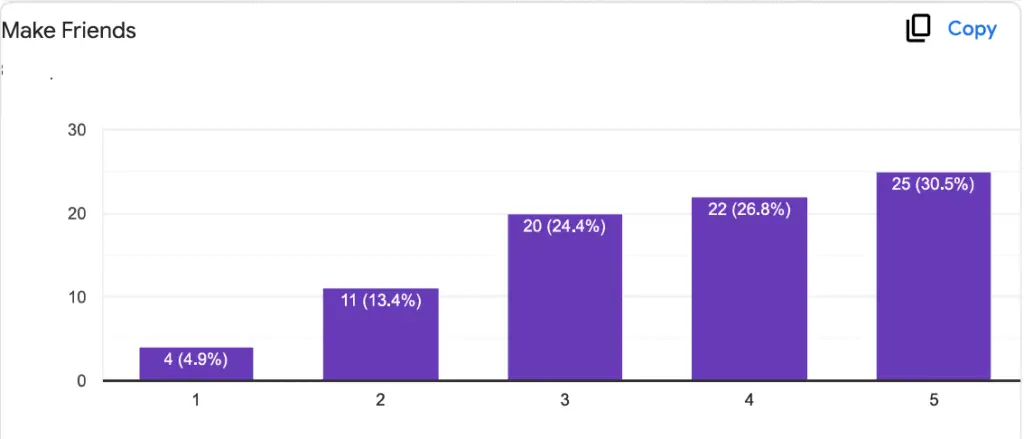Some of you might know that CrossFit nut from work who doesn’t stop going on about it. Or maybe you’ve tried it and you’re officially on your honeymoon period…
I’ve been doing it for over 12 years (coming up to 13) and still feel that seductive draw it induced on day 1. But why is CrossFit so addictive?
CrossFit is addictive because you are rewarded quickly with easily obtainable, incremental improvements. Furthermore, the Workout Of the Day (WOD) creates a flush of endorphins (a positive neurochemical response), mixed in with a tribal feeling of camaraderie amongst your peers in the class. This fusion of desirable feelings leaves members wanting more, thus instilling high retention and attendance rates at CrossFit Gyms, creating a natural air of addictiveness.

Reasons it’s addictive
There are some key points that help create the addictiveness. These include things such as:
- Community atmosphere
- Endorphins and dopamine
- Fast self-improvements
- 1-hour classes
- Lots to learn
Let look at these points in more detail.
Community Atmosphere
When doing a survey of 2 of our CrossFit Affiliates, the friendship and enjoyment elements were highlighted as being somewhat important to our members.
Because all walk of life and age ranges grace CrossFit gyms, it becomes a melting pot of cultures.
You become friends with people you may not ordinarily be friends with anywhere else.


People talk the same language. You get kicks out the same things. Camaraderie perfuses the environment as you slog through workouts together.
Furthermore, because it’s more of a club than a traditional gym, people naturally become friends whilst stretching off together, or when paired up.
So there is a tonne to learn. And from what we have learnt already, there is a tonne to refine.
Social endeavours
Extending from this, social outings are then commonplace.
Things such as barbecues, nights out, weddings, or evening Open Gym sessions with your buddies on a Saturday. These are arranged by gym owners, coaches and even by members themselves.
Thus, going to the gym is not just “going to the gym”. You find yourself going there to hang out, blow off steam, unload some problems and have a laugh.
This environment can become inherently moorish.

Size matters
Whilst visiting over 70 CrossFit gyms throughout the world, it is notable that the smaller gyms have a higher degree of sociability.
The bigger the facility, it seems, the lesser the interaction between members. Logic would dictate this is purely down to size and dilution. For example, larger places have a more less interaction between members.
Case in point
Interestingly, when in Alberta Canada again this year, I noticed one of the biggest facilities I’ve ever trained in (a Reebok CrossFit, spanning 2 absolutely massive North American-sized industrial units) had recently closed.
When visiting this place 2 times in the years prior, we felt the atmosphere was notably less social.
It’s entirely likely due to its sheer size. Consequentially, this meant a less social atmosphere.
So possibly, the facility underperformed on average, due to its diluted sociability scoring, therefore struggled in retention compared to the smaller counterparts in the same region.
Endorphins and Dopamine
Another key component of CrossFit is the endorphin hit you get after a high-intensity workout.
This is what’s known as the MetCon in CrossFit classes. This Best Gym Hacks article expands on this.
Although we roll about on the floor gasping for air – complaining no end about the sore legs and how deathly the WOD was – deep inside our central nervous system is the neurochemical feel-good-factor.
The analgesic properties of these endorphins wash throughout our bodies post-workout.
They make us feel a wonderful sense of:
- Satisfaction
- Accomplishment
- Achievement
- Happiness
- Awesomeness
These becomes key to our cyclical well-being and healthy gym-habits.
Understandably, CrossFit has been long heralded as superior for mental health compared to a ‘normal’ gym, particularly from the feelings it induces. Exercise is known to be an effective antidepressant, as this study shows.
Many studies have examined the efficacy of exercise to reduce symptoms of depression, and the overwhelming majority of these studies have described a positive benefit associated with exercise involvement.
Lynette L. Craft, Ph.D. and Frank M. Perna, Ed.D., Ph.D. – The Benefits of Exercise for the Clinically Depressed
Walking away from each class in this positive mind state helps create a desire for more and more. We enjoy that feeling. And crave more of it.
Self-Improvements

Given the huge amount of techniques and exercises there is to learn within the scope of CrossFit, every day is indeed a school day.
Olympic weightlifters dedicate their entire lives to working on the Snatch and Clean and Jerk. Fluency of these 2 skills are one of the scores and scores within the CrossFitters repertoire.
So there is a tonne to learn. And from the things we’ve learnt already, there is a tonne to refine.
Our members say so
The survey we carried out showed as affiliate owners showed that learning new things was important to our members.
As business owners, we jointly make sure to keep the movements in our programming fresh, so as to keep engagement high.
It also ensures members are getting value for money.

This scientific study shows the link between exercise with its positive effects on human, plus the correlation of its addictiveness.
This is just for exercise in general. You can become addicted to anything and any exercise.
CrossFit is fun for the many that do it, making it more open to addictiveness due to the other factors at play.
CrossFit improvements
Improvements are small and incremental in CrossFit. That means there are a lot of them.
This article explains the Novice Effect Theory, highlighting how we improve at a steep rate when first starting CrossFit, followed by a levelling out.
Trailing this is an eventual plateau, with only small gains as we move on to advanced.
With a sense of continual improvement very early on, we are rewarded neurochemically again, therefore adding to the ‘good experience’ ticklist in our brains – signalling to ourselves, ‘more of that please‘.
1-Hour – Get It Done
As human beings we generally like structure and order.
CrossFit is a 1-hour class. This is ample time to warm up, do the strength/skill piece, then MetCon (Workout Of the Day (WOD)), and then cool down.
Contrast this with a ‘globo gym‘ like Anytime Fitness – we’ve all been in there meandering around for 2 hours, coming away not having achieved much.
On the other end of the scale, F45 is a 45-minute class. This is for many too short. You don’t get time to do a group cool down and stretch off together, as you do at a CrossFit class.
Obviously, this is not ideal, as failure to cool down and stretch off heightens the risk of injury. This article further explains the differences between F45 and CrossFit.
Life’s timetable
The convenience of a CrossFit 1-hour class, with a solid timetable, creates stability and a habitual pattern that fits in with our lives.
The classes are normally spread in such a way that you can fit a bust schedule in and around your training. Slots such as:
- Early morning 5/6am class
- Post school run class
- Lunchtime class
- early evening classes
- Late class
Many CrossFit Gyms cater for the membership and tailor their timetables accordingly. Members are then able to conveniently optimise their lives around their training.

Motivation and accountability
It also helps with motivation as you’re booked into a class. Even when you don’t feel like going, having yourself booked in helps create a level of accountability, so you go (and feel glad that you did).
This cycle helps bolster the perpetual addiction, as even on tired days you still end up going and get something out of it.
Summary
So these are just some of the fundamental reasons that CrossFit can be addictive to its subscribers.
Yes, it is multilayered, but it also does go to the depths of appealing to the complicated bits in our brains. It’s more than a superficial desire to get fitter or look better.
CrossFit affords a high level of naturally-found motivation, social interaction, accountability and overarching enjoyment which is difficult to shake, once you really have caught the bug.
Of course, there are geeky and scientific reasons as to why it’s addictive. But in layman’s terms, its stupidly fun and you’re hanging out with your pals, whilst being healthy.
What’s not to love?
